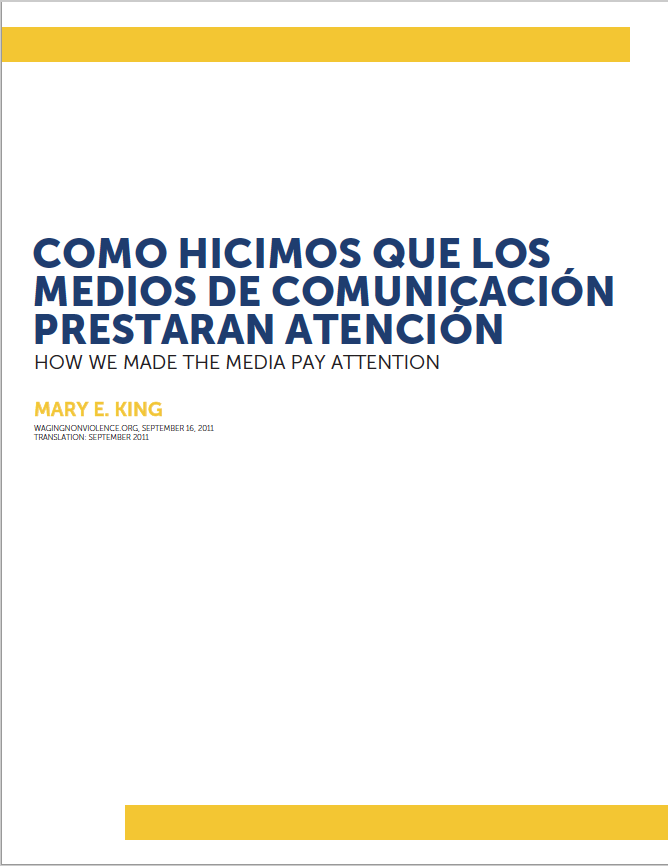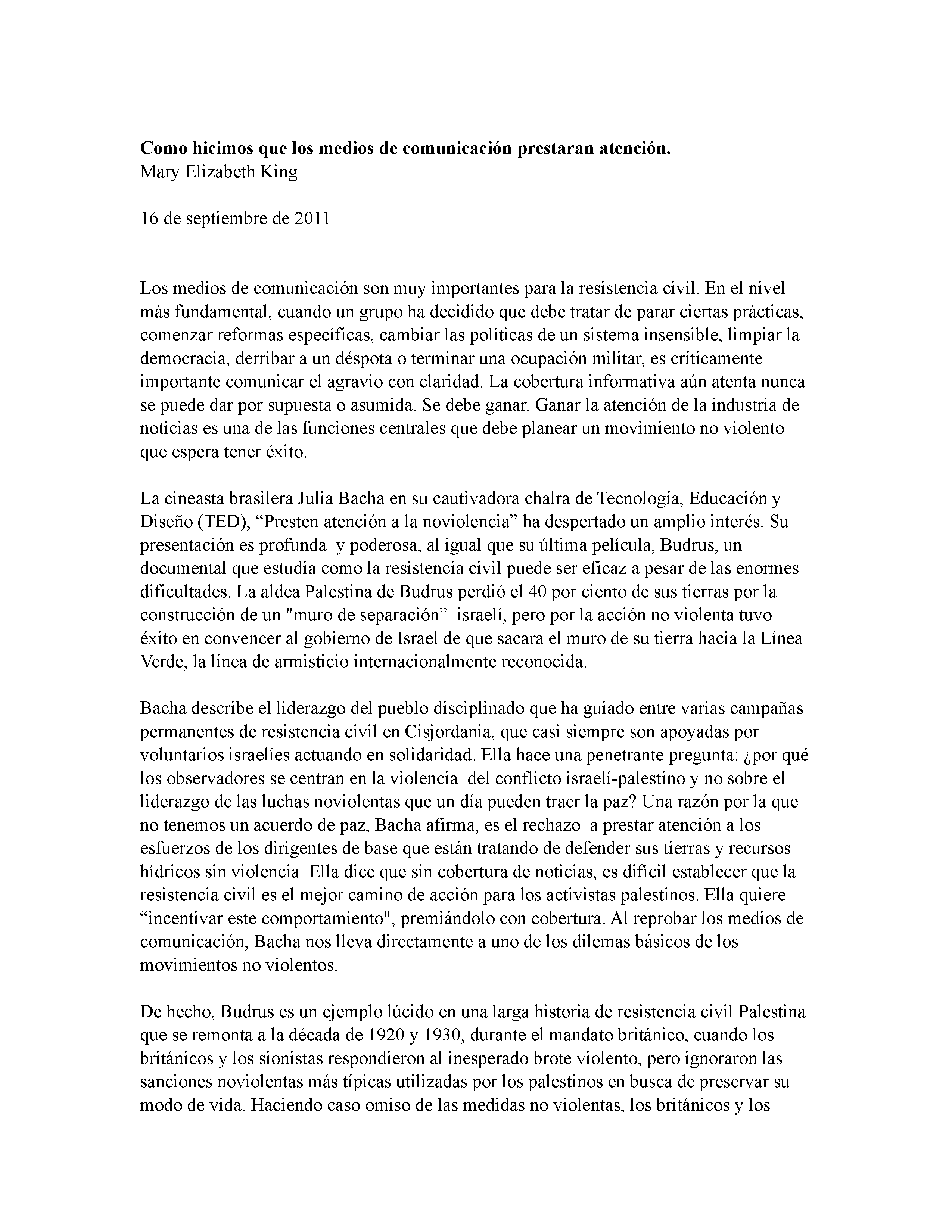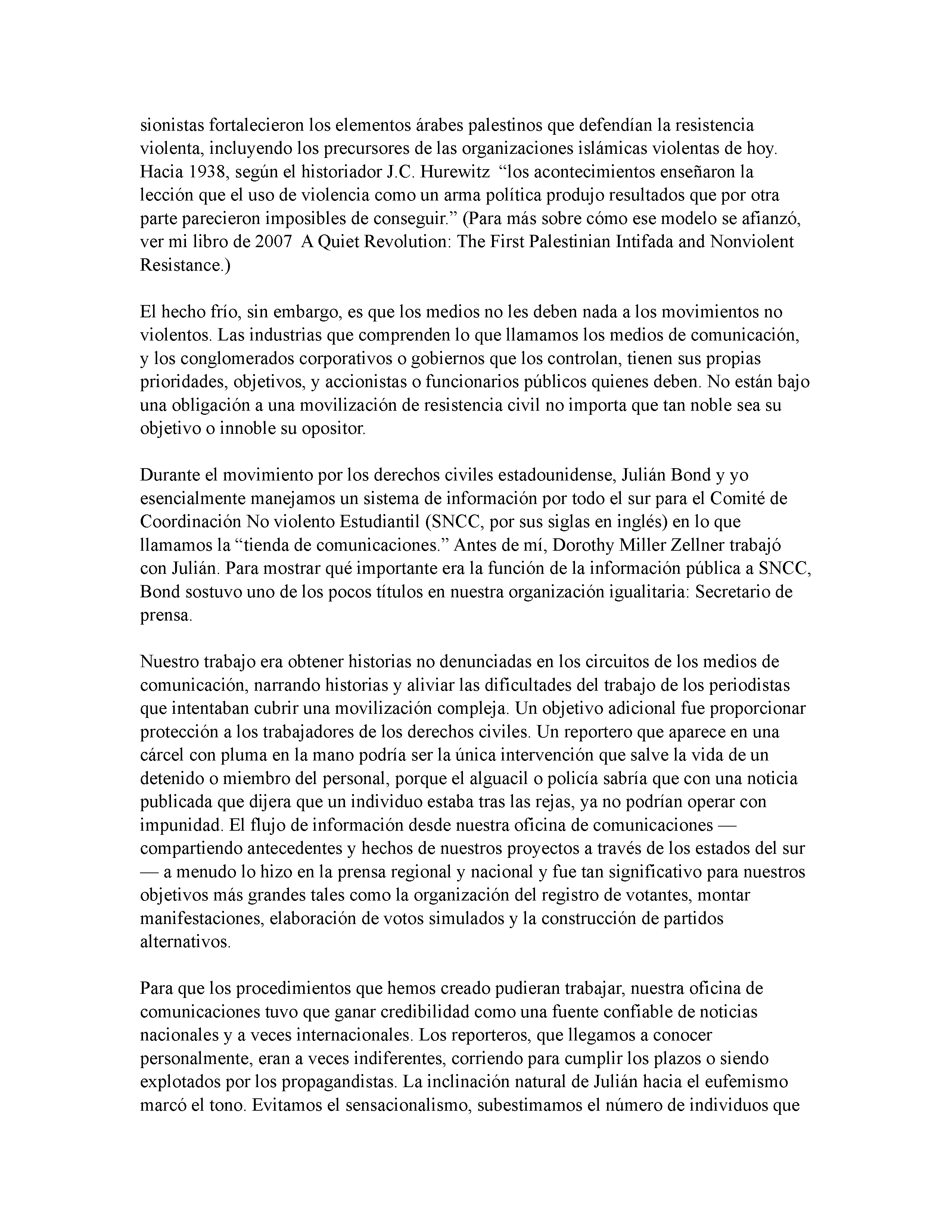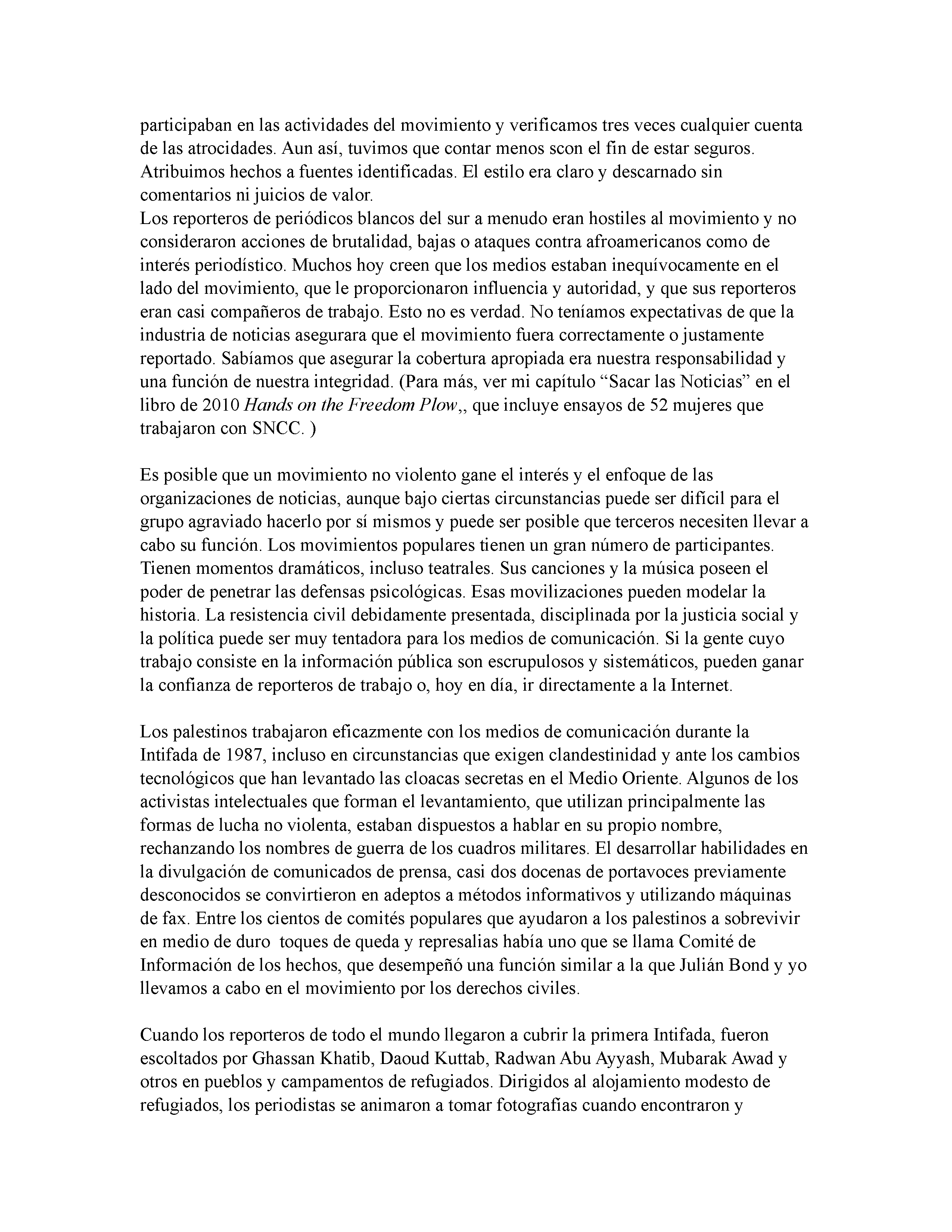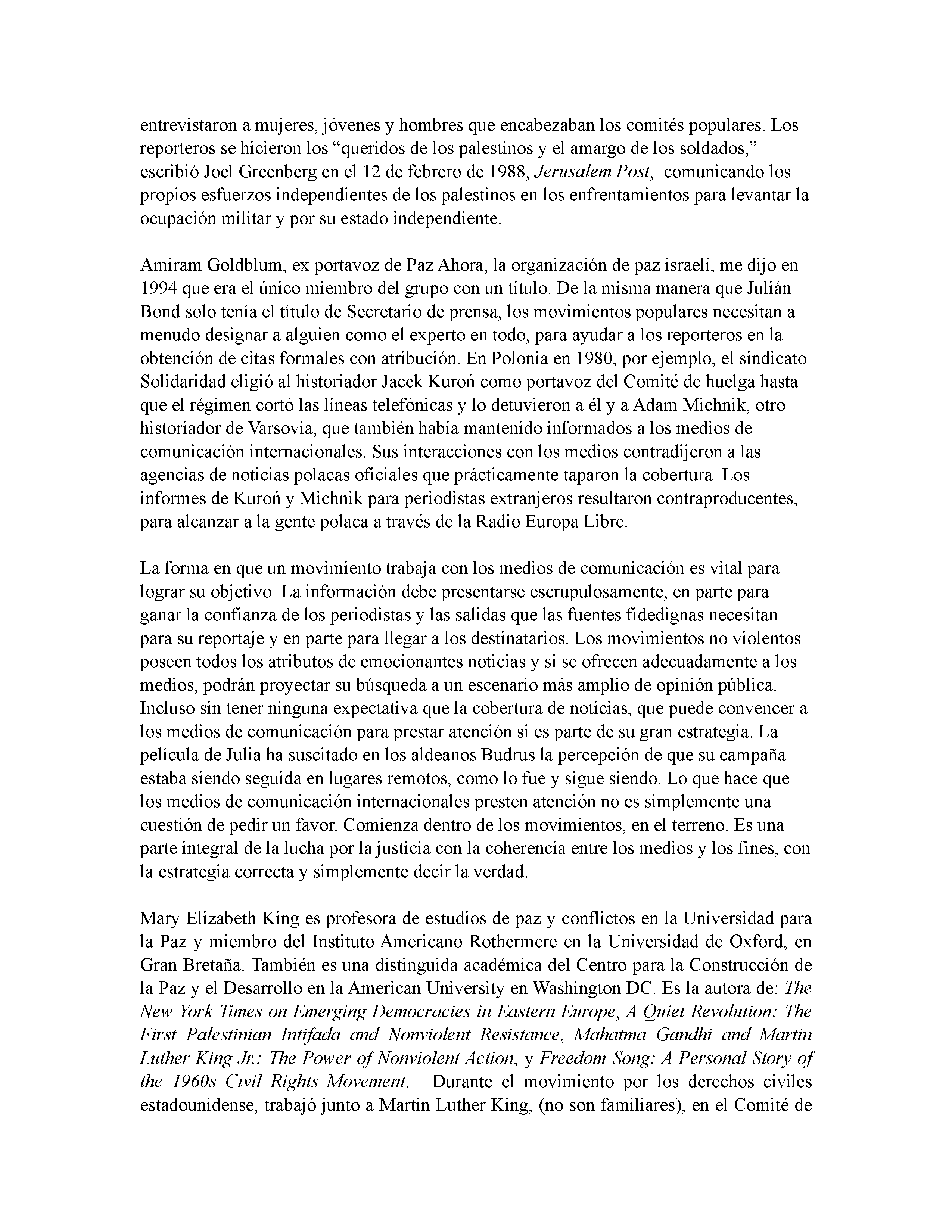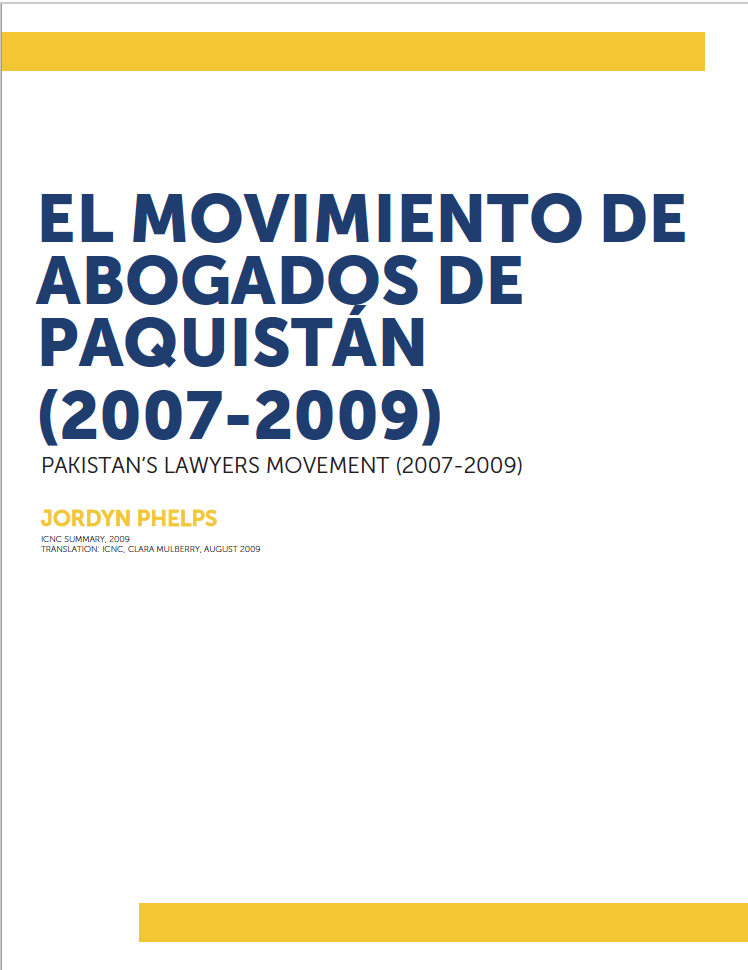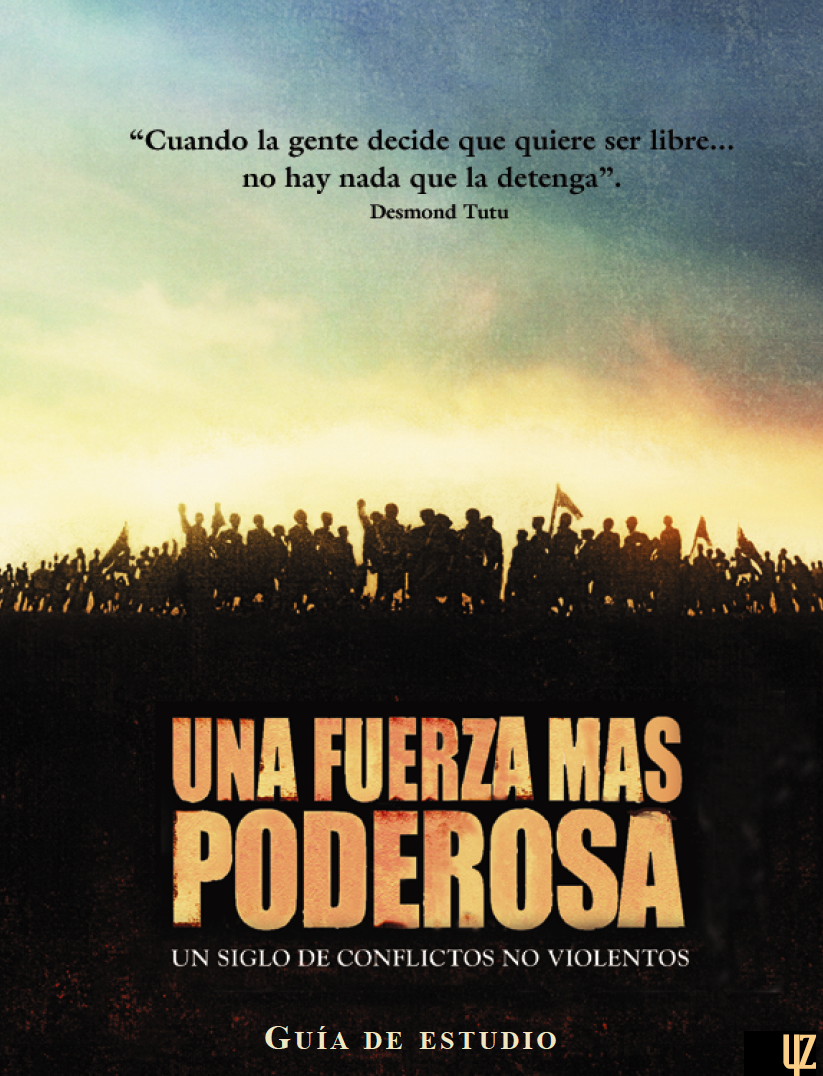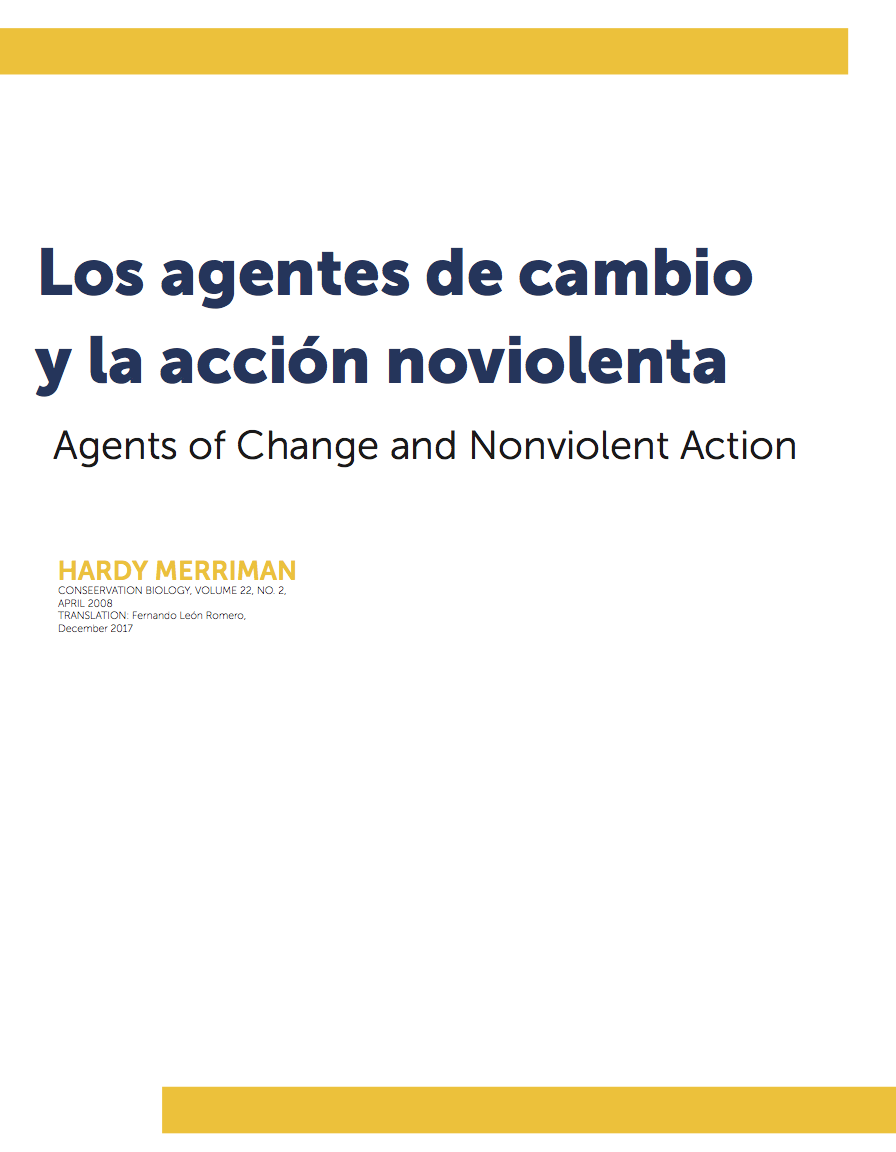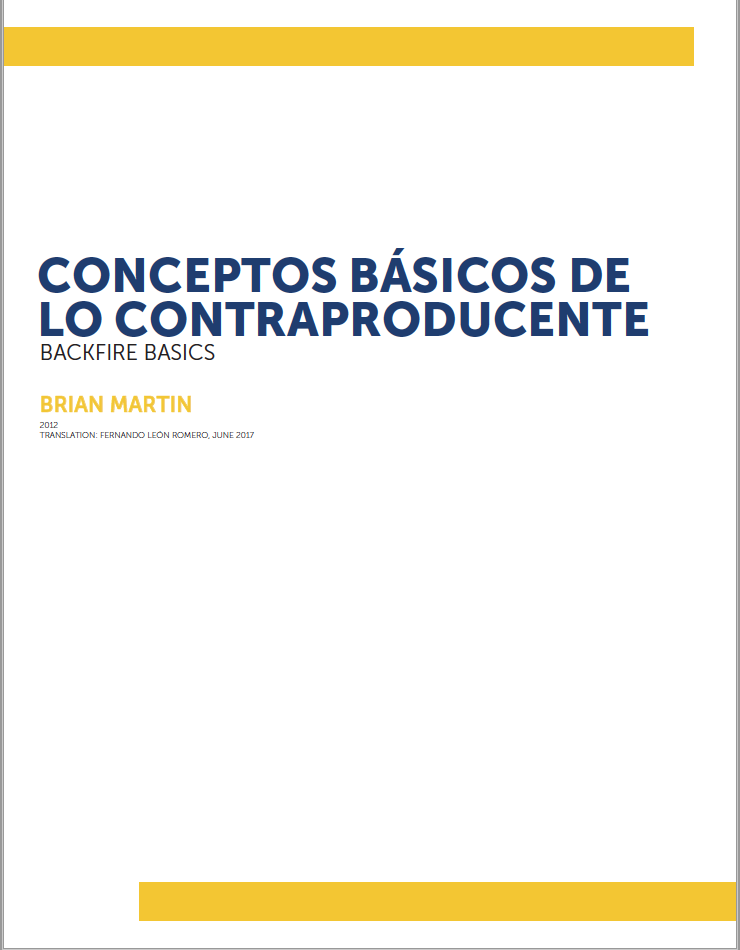Como hicimos que los medios de comunicación prestaran atención
Los medios de comunicación son muy importantes para la resistencia civil. En el nivel más fundamental, cuando un grupo ha decidido que debe tratar de parar ciertas prácticas, comenzar reformas específicas, cambiar las políticas de un sistema insensible, limpiar la democracia, derribar a un déspota o terminar una ocupación militar, es críticamente importante comunicar el agravio con claridad. La cobertura informativa aún atenta nunca se puede dar por supuesta o asumida. Se debe ganar. Ganar la atención de la industria de noticias es una de las funciones centrales que debe planear un movimiento no violento que espera tener éxito.
wagingnonviolence.org, September 16, 2011
Traducción: September 2011
